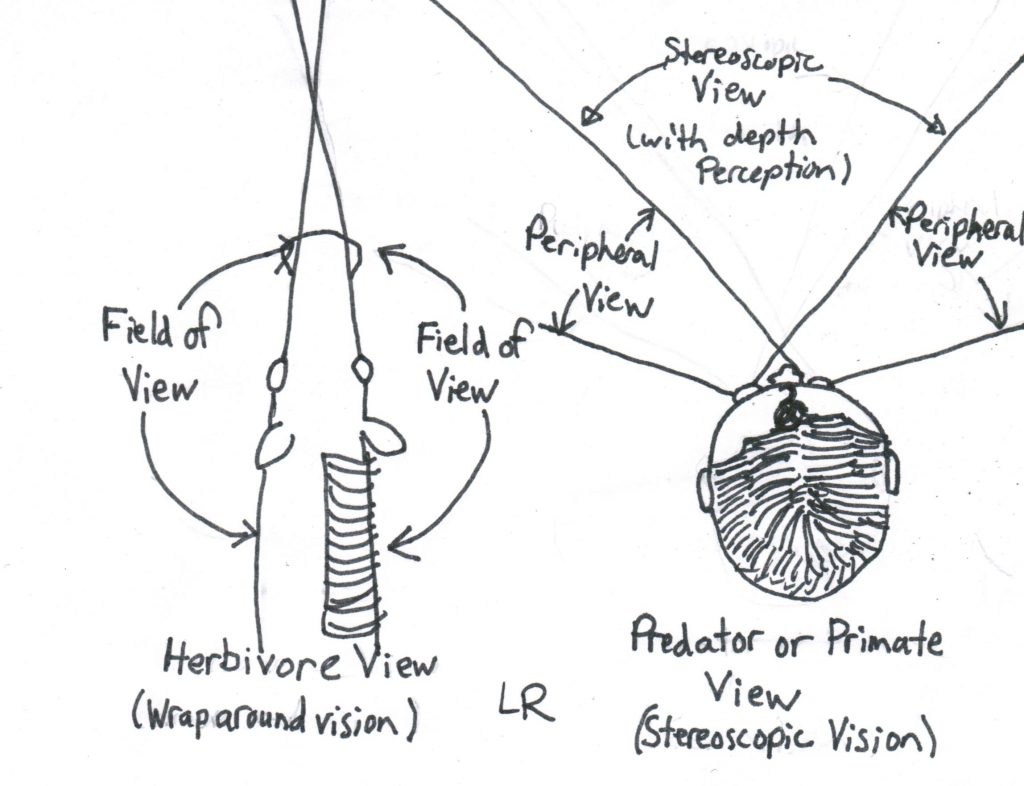It’s only in the last couple of years that I’ve been privy to the info that the red dot some Hindus wear on their foreheads is supposed to represent a third eye.
It’s not that I’ve never thought about the idea of having a third eye. It’s just that my thinking kind of goes like this. See below in the drawing of a herbivore and a predator/primate’s two eyed vision. Nature has come up with these two models of vision depending on what is most important to the creature possessing the pair of eyes.
Notice that the herbivore has wraparound vision. This is to ensure that it is never snuck up on by predators. Thus it always has a head start when the predator gives chase.
The predator/primate has stereoscopic vision. What’s so special about this? Well it gives depth perception to the possessor of such vision which is awfully important when a predator wants to know how close it has come to its prey and when to lunge at said prey for a possible deadly strike. Primates need the depth perception for accurate tree climbing so they can jump from branch to branch in the trees. And some of the bigger primates are predators, too.
So the reason I didn’t realize that the Hindu third eye is a third eye is because I feel that the perfect position for a third eye on a predator/primate’s head is an eye on the back of the head. This way the possessor of said eyes has wraparound vision as well as the important stereoscopic vision. Or the best of both worlds.
 Of course Hindus believe their third eye is more than a normal eye. They think the third eye gives a sort of spiritual sight. So perhaps its position at the front is important to help read faces.
Of course Hindus believe their third eye is more than a normal eye. They think the third eye gives a sort of spiritual sight. So perhaps its position at the front is important to help read faces.
But what if the third eye was on the back of the head? Having these three eyes, Hindus could eye each other spiritually. It’s just that they’d have to be back to back. That third eye position, to me, just sounds like winner.


